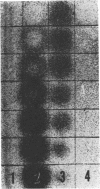Abstract
With the agar diffusion test and BS-C-1 cells, mycophenolic acid was found to give a straight-line dose-response activity in inhibiting the cytopathic effects of vaccinia, herpes simplex, and measles viruses. Plaque tests have shown 100% reduction of virus plaques by mycophenolic acid over drug ranges of 10 to 50 μg/ml and virus input as high as 6,000 plaque-forming units (PFU) per flask. Back titration studies with measles virus inhibited by mycophenolic acid have indicated that extracellular virus titers were reduced by approximately 3 logs10 and total virus was reduced by 1 log10. The agar diffusion test system lends itself readily to drug reversal studies. Mycophenolic acid incorporated into agar at 10 μg/ml gave 100% protection to virus-infected cells. Filter paper discs impregnated with selected chemical agents at concentrations of 1,000 μg/ml (20 μg per filter paper disc) were placed on the agar surface. Reversal of the antiviral activity of mycophenolic acid was indicated by virus breakthrough in those cells in close proximity to the filter paper disc. Chemicals showing the best reversal of the antiviral activity of mycophenolic acid were guanine, guanosine, guanylic acid, deoxyguanylic acid, and 2,6-diaminopurine. The reversal of antiviral activity was confirmed by titrations of virus produced with various amounts of both mycophenolic acid and guanine present and by isotope tracer methods with uptakes of labeled uridine, guanine, leucine, and thymidine in treated and nontreated, infected and noninfected cells as parameters. All antiviral effects of mycophenolic acid at 10 μg/ml could be reversed to the range shown by untreated controls by the addition of 10 μg/ml of those chemicals exhibiting reversal activity.
Full text
PDF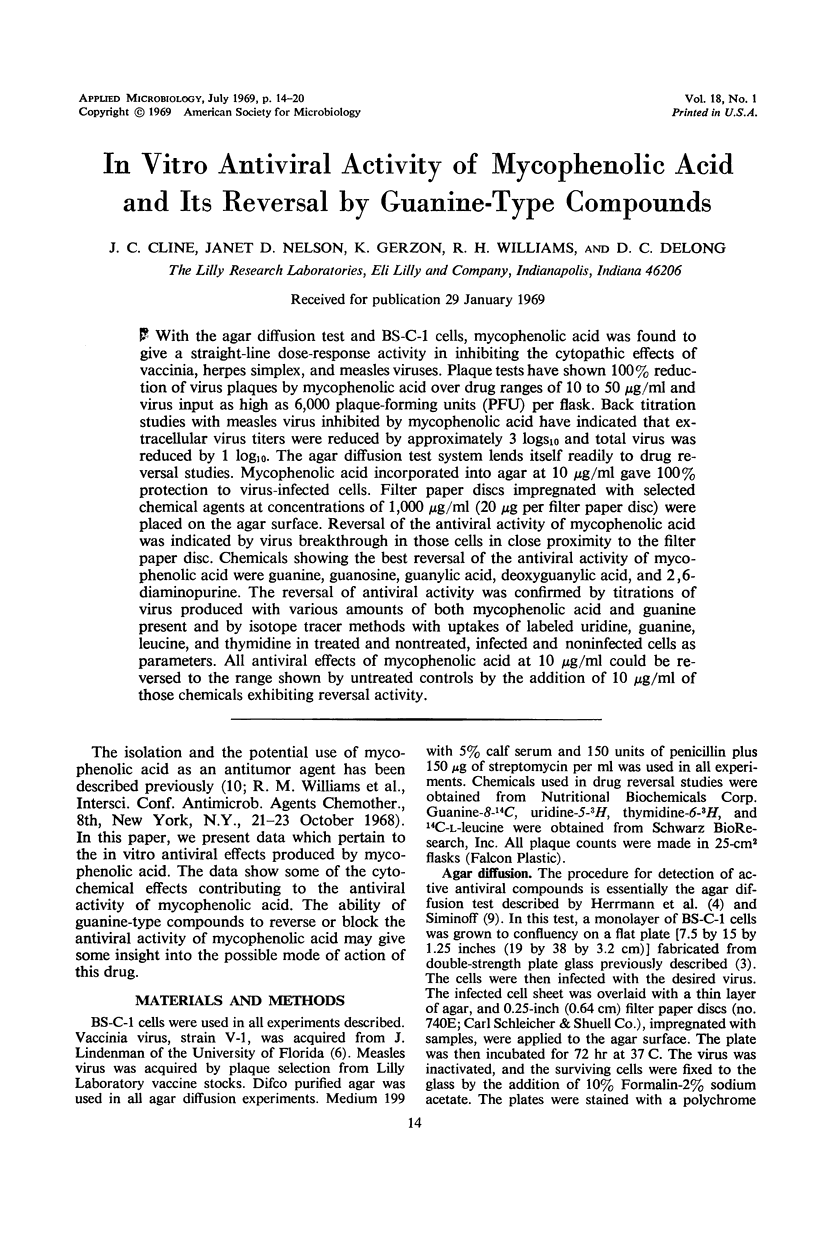
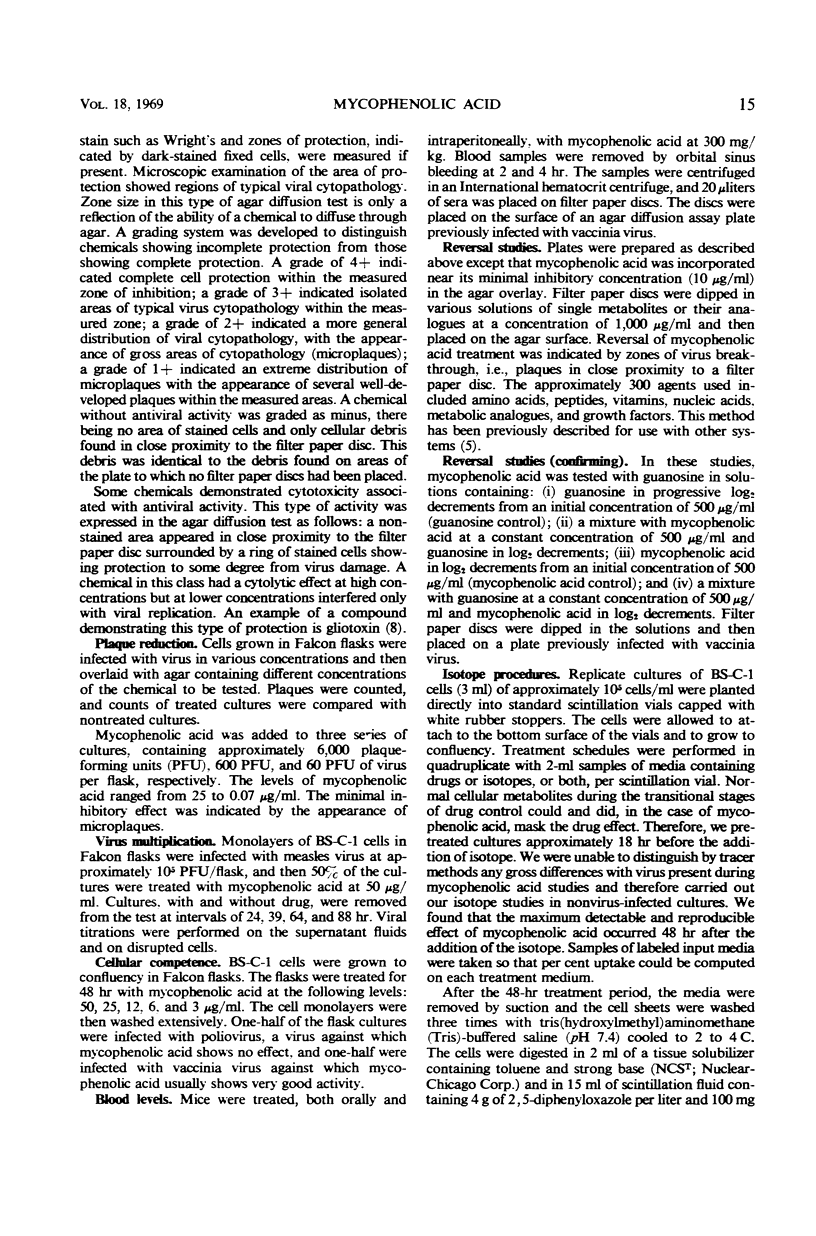
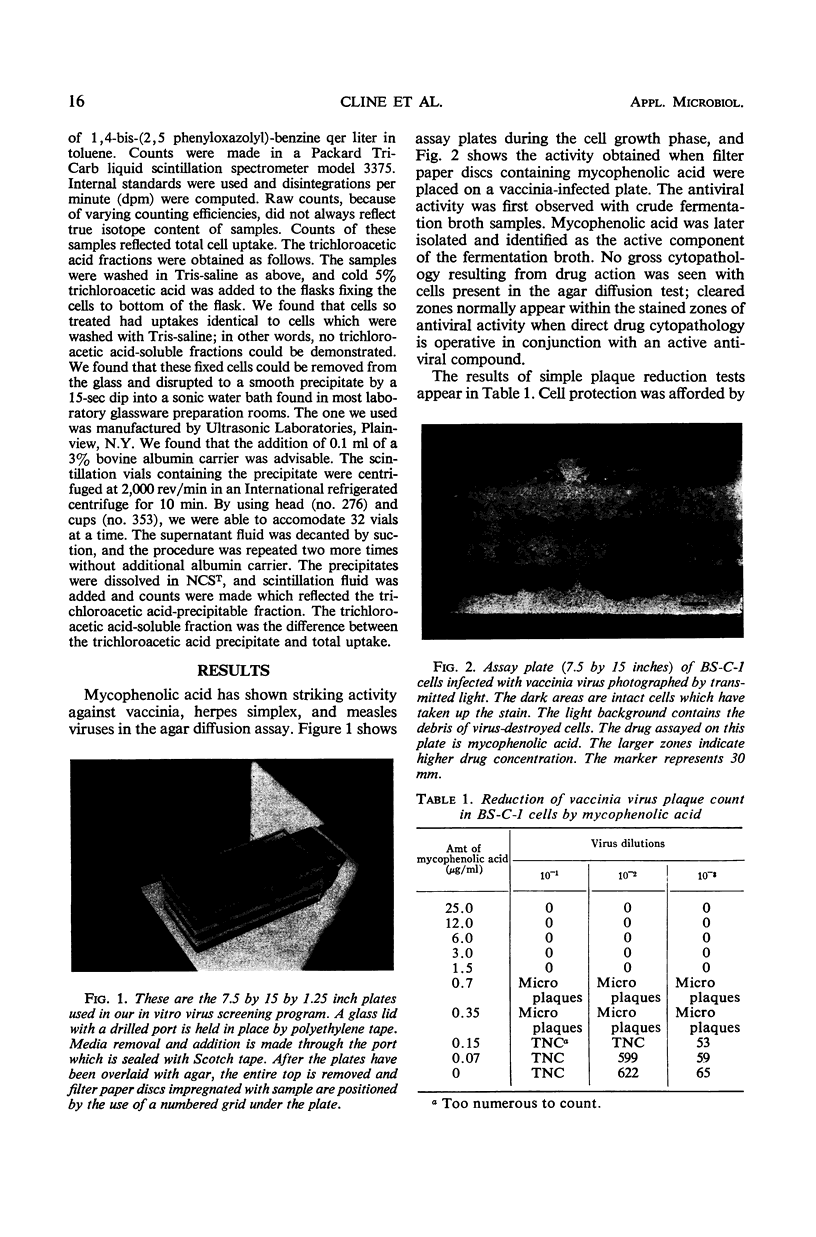
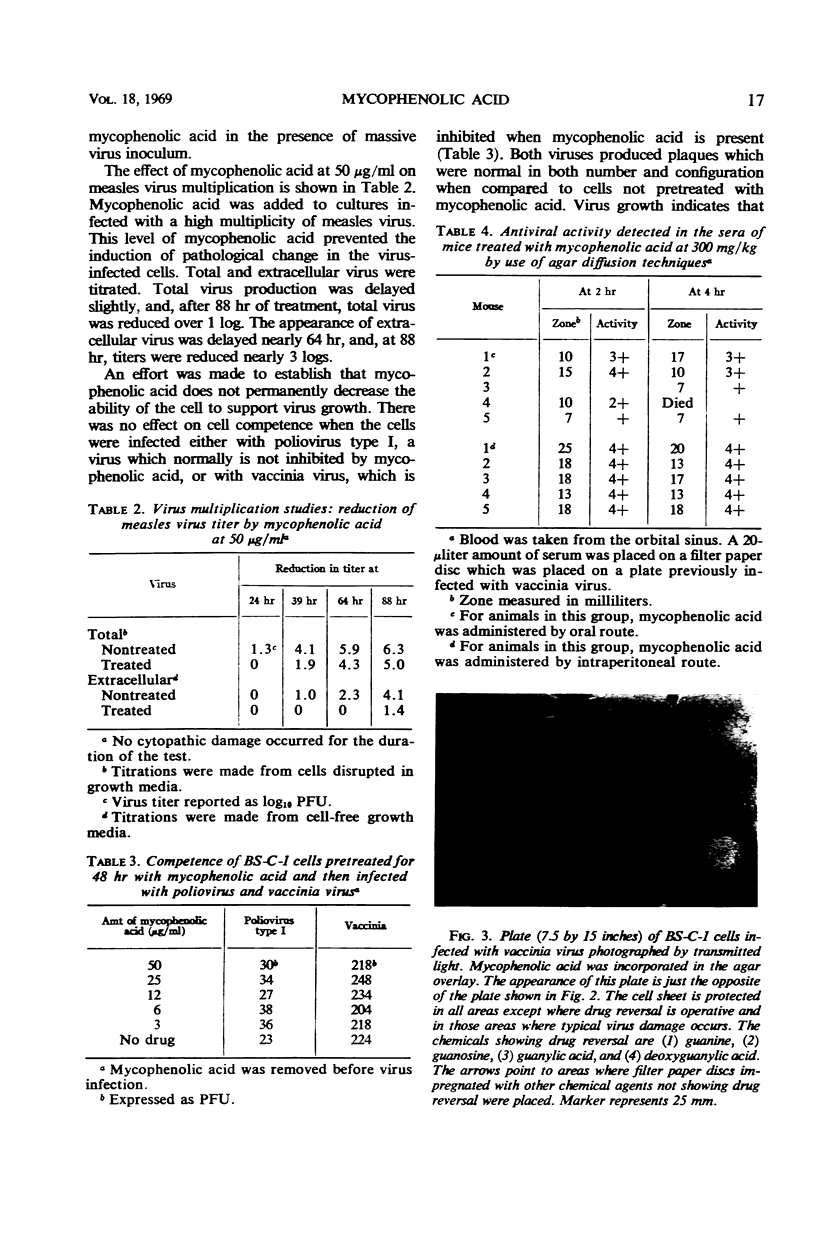
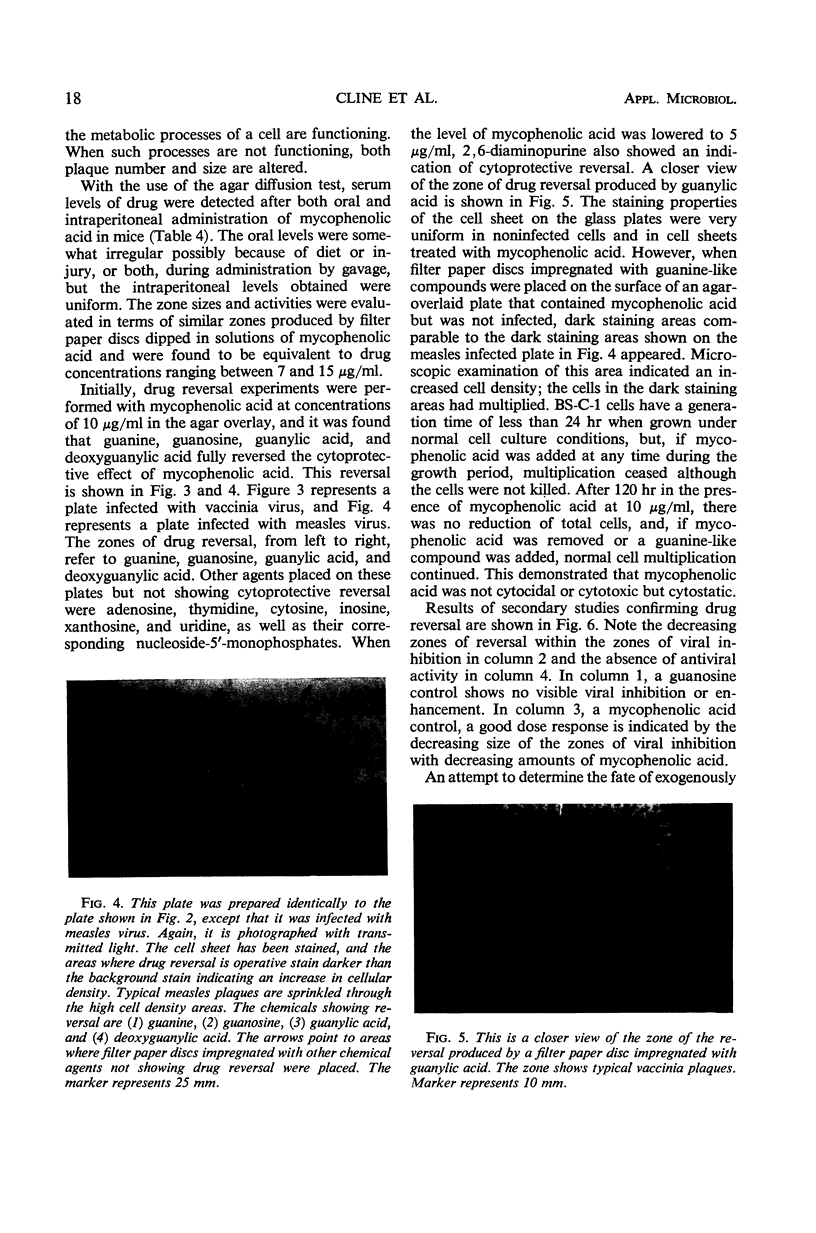
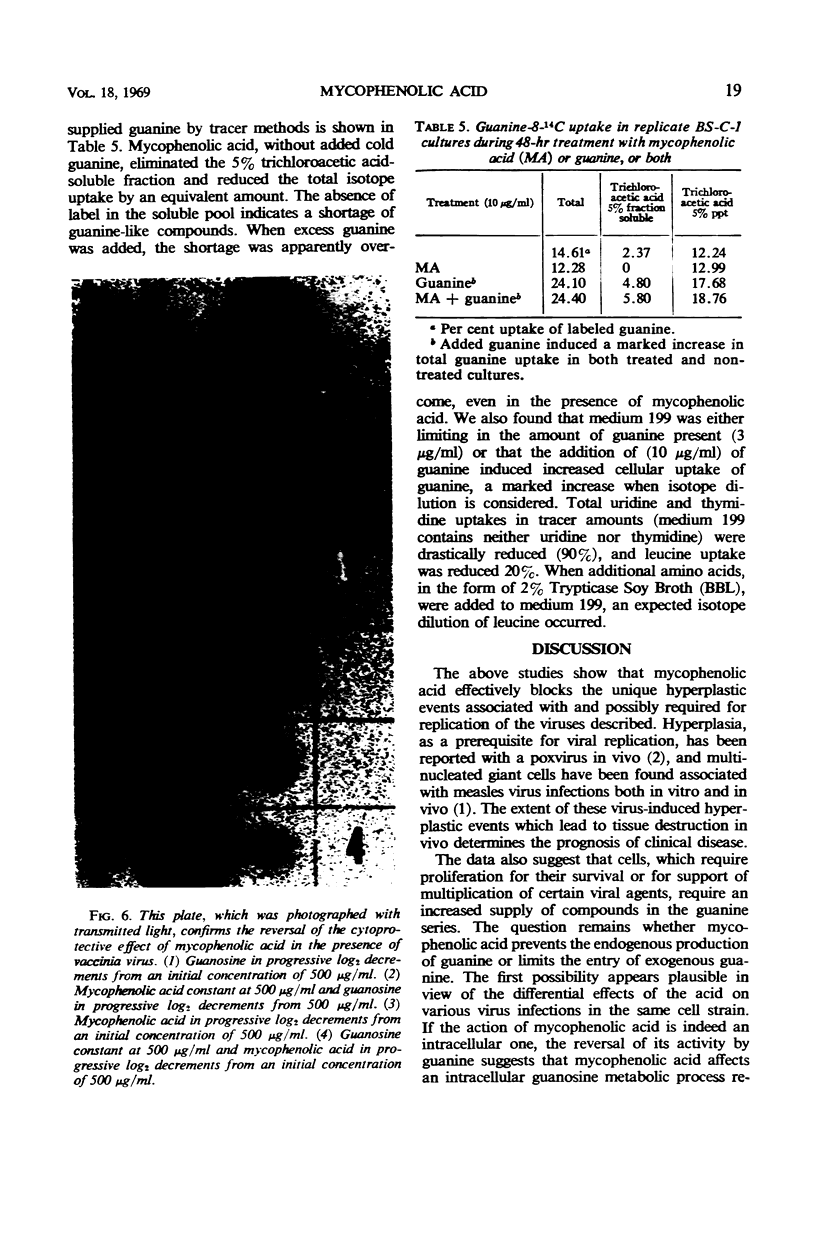
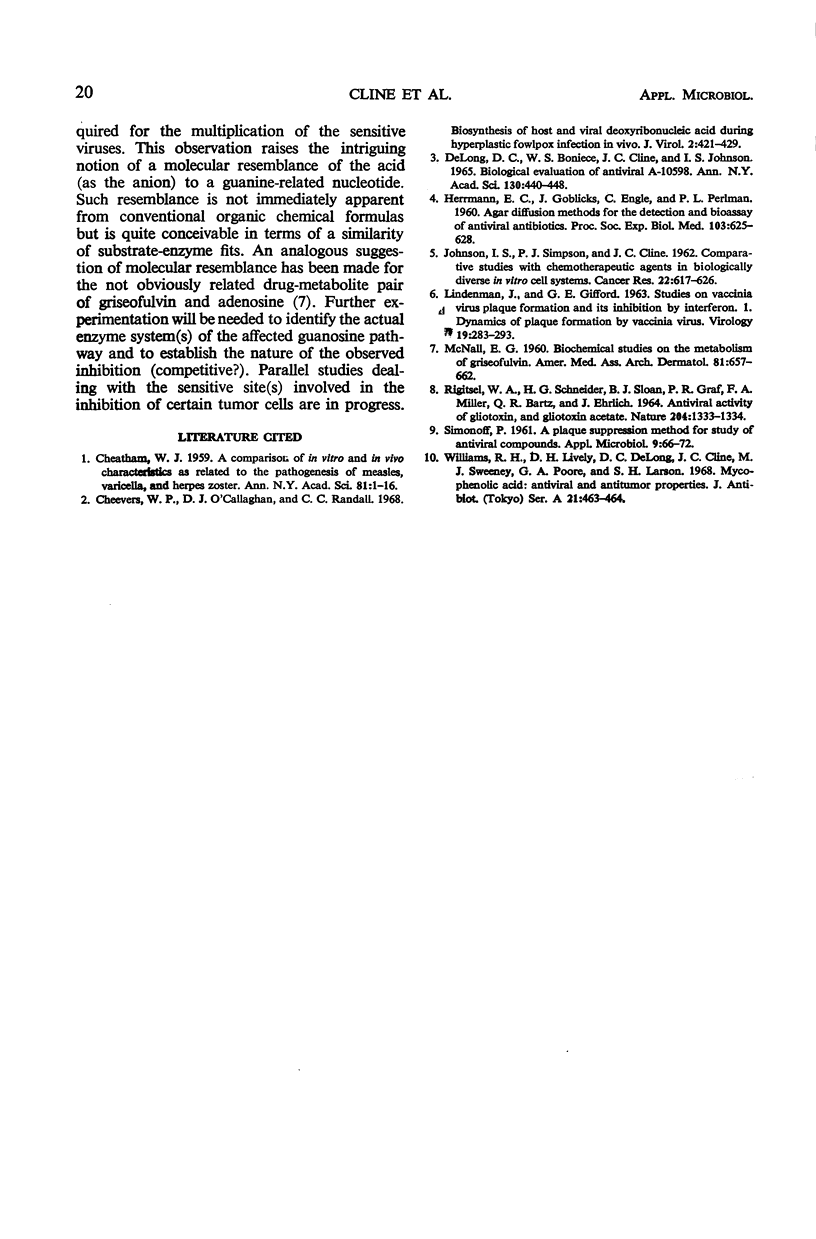
Images in this article
Selected References
These references are in PubMed. This may not be the complete list of references from this article.
- CHEATHAM W. J. A comparison of in vitro and in vivo characteristics as related to the pathogenesis of measles, varicella, and herpes zoster. Ann N Y Acad Sci. 1959 Jul 21;81:6–16. doi: 10.1111/j.1749-6632.1959.tb49290.x. [DOI] [PubMed] [Google Scholar]
- Cheevers W. P., O'Callaghan D. J., Randall C. C. Biosynthesis of host and viral deoxyribonucleic acid during hyperplastic fowlpox infection in vivo. J Virol. 1968 May;2(5):421–429. doi: 10.1128/jvi.2.5.421-429.1968. [DOI] [PMC free article] [PubMed] [Google Scholar]
- HERRMANN E. C., Jr, GABLIKS J., ENGLE C., PERLMAN P. L. Agar diffusion method for detection and bioassay of antiviral antibiotics. Proc Soc Exp Biol Med. 1960 Mar;103:625–628. doi: 10.3181/00379727-103-25617. [DOI] [PubMed] [Google Scholar]
- JOHNSON I. S., SIMPSON P. J., CLINE J. C. Comparative studies with chemotherapeutic agents in biologically diverse in vitro cell systems. Cancer Res. 1962 Jun;22:617–626. [PubMed] [Google Scholar]
- LINDENMANN J., GIFFORD G. E. Studies on vaccinia virus plaque formation and its inhibition by interferon. I. Dynamics of plaque formation by vaccinia virus. Virology. 1963 Mar;19:283–293. doi: 10.1016/0042-6822(63)90066-7. [DOI] [PubMed] [Google Scholar]
- RIGHTSEL W. A., SCHNEIDER H. G., SLOAN B. J., GRAF P. R., MILLER F. A., BARTZ O. R., EHRLICH J., DIXON G. J. ANTIVIRAL ACTIVITY OF GLIOTOXIN AND GLIOTOXIN ACETATE. Nature. 1964 Dec 26;204:1333–1334. doi: 10.1038/2041333b0. [DOI] [PubMed] [Google Scholar]
- Siminoff P. A Plaque Suppression Method for the Study of Antiviral Compounds. Appl Microbiol. 1961 Jan;9(1):66–72. doi: 10.1128/am.9.1.66-72.1961. [DOI] [PMC free article] [PubMed] [Google Scholar]
- Williams R. H., Lively D. H., DeLong D. C., Cline J. C., Sweeny M. J. Mycophenolic acid: antiviral and antitumor properties. J Antibiot (Tokyo) 1968 Jul;21(7):463–464. doi: 10.7164/antibiotics.21.463. [DOI] [PubMed] [Google Scholar]








